Keyword Research Checklist For Creating Stellar Content
Written By
Published On
Read Time

Anyone who's been working with SEO for a bit has watched how keyword research has completely transformed. Back in the early days, it was all about picking keywords with lots of searches but not much competition.
Back then, making a list of keywords to focus on was pretty straightforward, since there weren't that many websites vying for the same terms. But as more businesses jumped into the online world, finding those golden keywords with high searches and low competition got tougher.
Google's algorithm started to evolve, too, prioritizing the relevance and quality of content over how many keywords you could pack in. This means that keywords which used to be crucial for getting noticed on search engines aren't as critical anymore.
However, there's a silver lining: there's still a chance to rank well on search engines by focusing on keywords that are very relevant to what you're offering. The trick is to concentrate on the quality and relevance of your content, not just on stuffing it with keywords.
Here's a keyword research checklist you should follow to make sure your SEO work pays off:
Planning and Preparing Your Content
When you start planning your content, the first step is to create a keyword research checklist. This checklist will guide you through the process of finding the right words and phrases that your audience is searching for. Begin by understanding what your content aims to achieve and who it's for. This initial stage sets the foundation for a successful SEO strategy.
Define Your Goals and Understand Your Audience
Defining your goals is essential. Ask yourself what you want to achieve with your content. Is it to increase traffic, boost sales, or raise brand awareness? Once your goals are clear, get to know your audience. Understand their needs, problems, and the type of content they prefer. This understanding will help you create content that resonates with them.
Analyze Competitors: Websites, Social Media, Quora, etc.
Looking at what your competitors are doing can provide valuable insights. Check their websites, social media profiles, and platforms like Quora to see what keywords they're targeting. This analysis can reveal gaps in their strategies that you can exploit. It also helps you understand the competitive landscape and adjust your strategy accordingly.
Use Tools: Semrush, Ahrefs, ChatGPT, and More for Advantage
Leverage tools like Semrush, Ahrefs, and ChatGPT to streamline your keyword research. These tools offer insights into keyword difficulty, search volume, and trends. They can also help you find LSI keywords related to your main keyword. Using these tools gives you a competitive edge by allowing you to make data-driven decisions.
Focus on Quality and Strategic Use of Keywords
Quality content with strategically placed keywords is key to ranking higher in search results. Your content should answer your audience's questions and provide value. While keywords are important, stuffing your content with them can hurt your SEO. Instead, use keywords naturally and focus on creating informative and engaging content.
Emphasize Long-tail Keywords and Internal Linking
Long-tail keywords are more specific and less competitive than short-tail keywords. They allow you to target niche demographics and increase your chances of ranking higher. Additionally, don't forget about internal linking. Linking to other pages on your site helps search engines understand your site structure and boosts your SEO efforts.
Mastering Keyword Research Tools
Mastering keyword research tools is a critical step in creating a comprehensive keyword research checklist. Tools like Semrush and Ahrefs are invaluable for uncovering insights that can shape your content strategy. They allow you to dive deep into keyword analytics, revealing not just popular search terms but also niche keywords that offer opportunities for high rankings. Understanding how to leverage these tools effectively can significantly enhance your SEO efforts.
How to Utilize Semrush and Ahrefs for In-depth Keyword Research
Semrush and Ahrefs are powerhouse tools for keyword research, each offering unique features to aid your strategy.
Semrush: Start by using the Keyword Overview feature to get a broad understanding of your target keyword, including its search volume, trend, and difficulty. Semrush's Keyword Magic Tool allows you to expand your initial keyword into a vast list of related keywords, including LSI keywords. This tool is particularly useful for identifying long-tail keywords that can drive targeted traffic. Additionally, the Keyword Gap tool can compare your keyword profile with competitors, highlighting opportunities you might be missing.
Ahrefs: Ahrefs excels with its Keywords Explorer, providing detailed insights into keyword difficulty, search volume, and click metrics. One of Ahrefs' standout features is the ability to see the estimated number of clicks for a keyword, not just the search volume. This can help you prioritize keywords that are not just popular but also effective at driving actual traffic. The Content Gap feature is another critical tool, allowing you to see which keywords your competitors rank for but you don't.
Tips for Effective Use of Keyword Research Tools
Start Broad, Then Narrow Down: Begin with a broad keyword to get a wide range of suggestions. Gradually narrow down your focus based on search volume, keyword difficulty, and relevance to your content.
Utilize Filters: Both Semrush and Ahrefs offer filters to refine your search results. Use these to limit your search to low-competition keywords, high-volume keywords, or keywords within a specific cost-per-click (CPC) range.
Explore Related Questions: Look for the "Questions" feature in these tools to find what your audience is asking. Answering these questions in your content can improve your visibility in search results.
Monitor Your Competitors: Use the competitive analysis features to understand which keywords your competitors are targeting. This can reveal gaps in their strategies that you can exploit.
Track Keyword Trends: Pay attention to keyword trends to capitalize on rising search terms before they become too competitive.
Focus on Intent: Beyond volume and difficulty, consider the intent behind keywords. Are they informational, navigational, transactional, or commercial? Align your content with the user intent for better engagement.
Understanding Search Intent
Understanding search intent is a crucial part of any keyword research checklist. It's about grasping the "why" behind every search query. When users type a query into a search engine, they have a specific intent or goal in mind. This intent can be to find information, make a purchase, locate a website, or find a specific answer. Recognizing and aligning your content with this intent is key to improving your SEO performance and meeting your audience's needs.
Discover the “Why” Behind Every Search
To truly connect with your audience, you need to dive deep into the reasons behind their searches. This involves going beyond the surface level of keywords to understand the context and the questions they are trying to answer. By doing so, you can tailor your content to answer those questions directly, making it more likely that your site will be seen as relevant by both search engines and users.
Analyze Top-ranking Websites and Identify Different Types of Search Intent
Analyzing top-ranking websites for your target keywords can provide insights into the search intent behind those keywords. Generally, search intent can be categorized into four types:
Informational Intent: The user is looking for information. This could be about a topic, how to do something, or answers to questions.
Navigational Intent: The user wants to visit a specific website or page.
Transactional Intent: The user is ready to buy or is looking for a place to make a purchase.
Commercial Investigation: The user is considering a purchase soon and is researching options.
Optimize Content for Search Intent with Long-tail Keywords and Questions
Optimizing your content for search intent means more than just including the right keywords. It involves creating content that answers the questions your audience is asking and fulfills their intent. Long-tail keywords are particularly useful for this. They are more specific than short-tail keywords and often contain a clear intent. For example, "best running shoes for marathons" shows a clear commercial investigation intent.
Including questions in your content is another effective strategy. Many search queries are phrased as questions, so answering these directly can improve your chances of ranking higher. Tools like "People Also Ask" in Google search results can provide insights into the questions users are asking.
Competition Analysis and Content Ideation
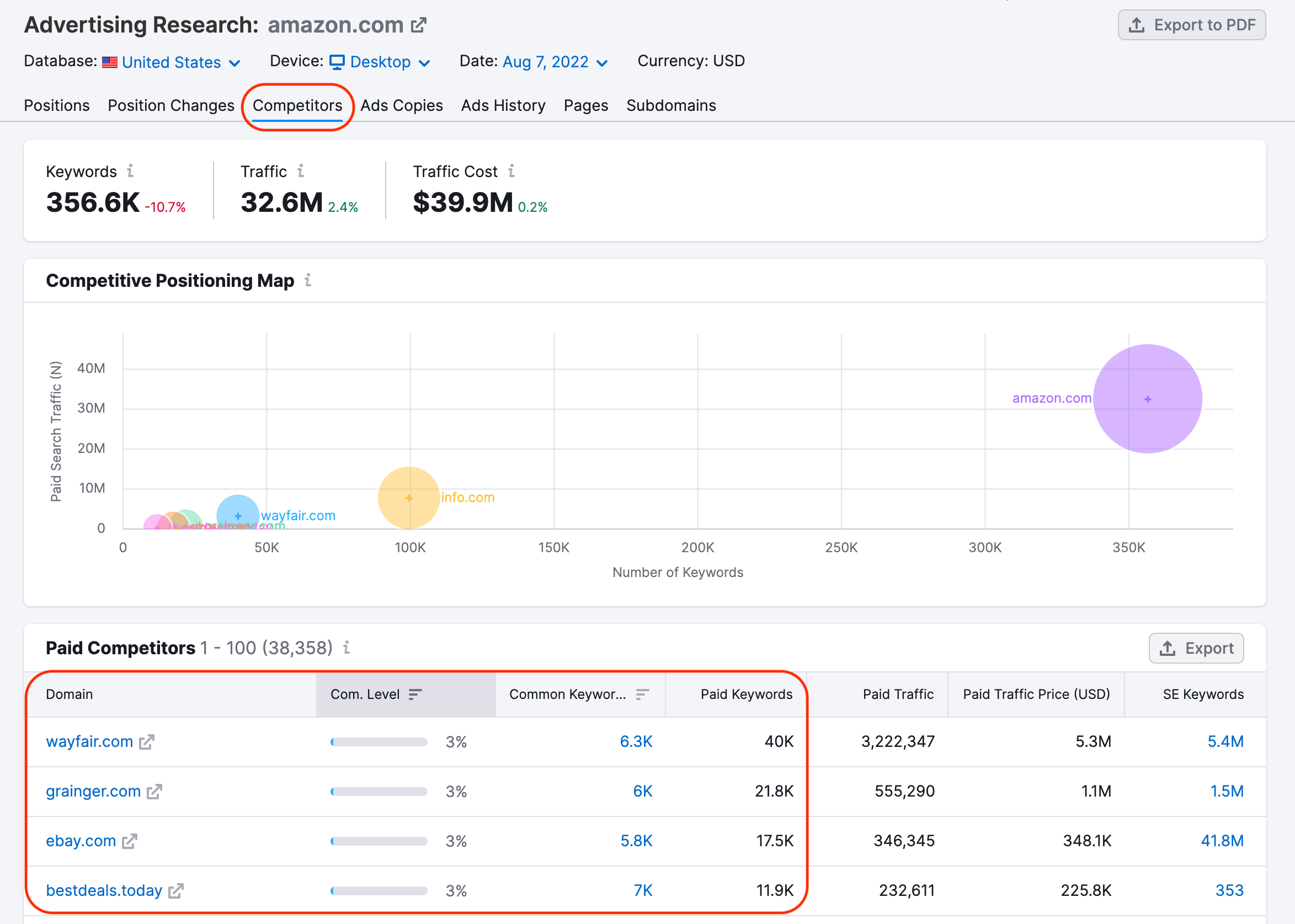
Competition analysis and content ideation are pivotal steps in refining your keyword research checklist. By understanding what your competitors are doing and generating innovative content ideas, you can carve out a unique space for your brand in the digital landscape. This process involves a detailed analysis of competitor websites, monitoring their social media presence, and leveraging advanced tools for content ideation.
Stalk Your Competition: Analyze Websites, Monitor Social Media
To gain a competitive edge, start by thoroughly analyzing your competitors' websites. Look for patterns in the keywords they target, the structure of their content, and any gaps in their strategies that you can exploit. Pay special attention to their most successful content pieces to understand what resonates with your shared audience.
Monitoring your competitors' social media activities can also provide insights into their content strategy and audience engagement. Notice the types of posts that generate the most interaction and how they incorporate keywords into their social media content. This analysis can reveal valuable trends and opportunities for your own content strategy.
Leverage Content Ideation Tools Like TopicMojo
Content ideation tools such as TopicMojo can significantly streamline the process of generating content ideas. These tools analyze search engines and social media to discover questions, comparisons, and topics related to your primary keywords. By using TopicMojo, you can uncover a wide array of angles and subjects that you might not have considered, ensuring that your content is both relevant and engaging to your target audience.

Explore Innovative Ideas Using ChatGPT
ChatGPT offers a unique avenue for content ideation, allowing you to explore innovative ideas by generating content outlines, answering questions, and even suggesting LSI keywords. By inputting your main keywords into ChatGPT, you can receive suggestions on related topics, questions your content can answer, and different perspectives to approach your subject matter. This can be particularly useful for expanding your keyword research checklist with creative and less obvious keywords that could drive traffic.
Keyword Organization and Strategy Development
Organizing your keywords effectively and developing a strategic approach to content creation are crucial steps in maximizing the impact of your SEO efforts. By creating a master keyword list, grouping keywords by relevance, evaluating their potential, and prioritizing them based on various factors, you can enhance your website's visibility, user engagement, and conversions. Here's how to approach each of these steps for a comprehensive keyword research checklist.
Create a Master Keyword List and Group Keywords by Topic or Theme

Start by compiling a master list of keywords that are relevant to your business, products, or services. This list should include a mix of short-tail and long-tail keywords, as well as LSI keywords that are conceptually related to your main topics. Once you have your list, the next step is to organize these keywords by topic or theme. Grouping keywords in this way helps you maintain focus and relevance in your content creation, ensuring that each piece of content you produce is targeted and effective in addressing the needs and interests of your audience.
Evaluate Keyword Potential and Assign Priority Levels
Not all keywords are created equal. To optimize your efforts, it's important to evaluate the potential of each keyword based on factors such as search volume, competition level, and relevance to your business goals. Assign priority levels to your keywords, with high-priority keywords being those that are most likely to drive traffic and conversions. This prioritization helps you focus your content creation efforts on the areas that are most likely to yield results, ensuring that your resources are allocated efficiently.
Organize Keywords for Better Conversions and Content Optimization
Organizing your keywords with a focus on conversions involves aligning them with your sales funnel and customer journey. Identify which keywords are more likely to be used by customers at different stages of their journey—from awareness to consideration to decision—and tailor your content accordingly. This strategic alignment ensures that your content not only attracts visitors but also guides them towards taking the desired action, whether it's making a purchase, signing up for a newsletter, or contacting your sales team.
Furthermore, organizing your keywords for content optimization means integrating them naturally into your content, titles, meta descriptions, and URLs. This not only helps improve your search engine rankings but also enhances the user experience by making your content more relevant and accessible.
Monitoring, Refinement, and Evolution
The landscape of SEO is constantly changing, and staying ahead requires ongoing monitoring, refinement, and evolution of your strategies. By consistently checking in on your rankings, refining your keyword list, adjusting your content strategy based on data, and staying updated with SEO best practices, you can ensure that your efforts yield the best possible results. Here's how to approach each of these critical steps.
Stay Consistent with Regular Check-ins and Monitoring of Rankings
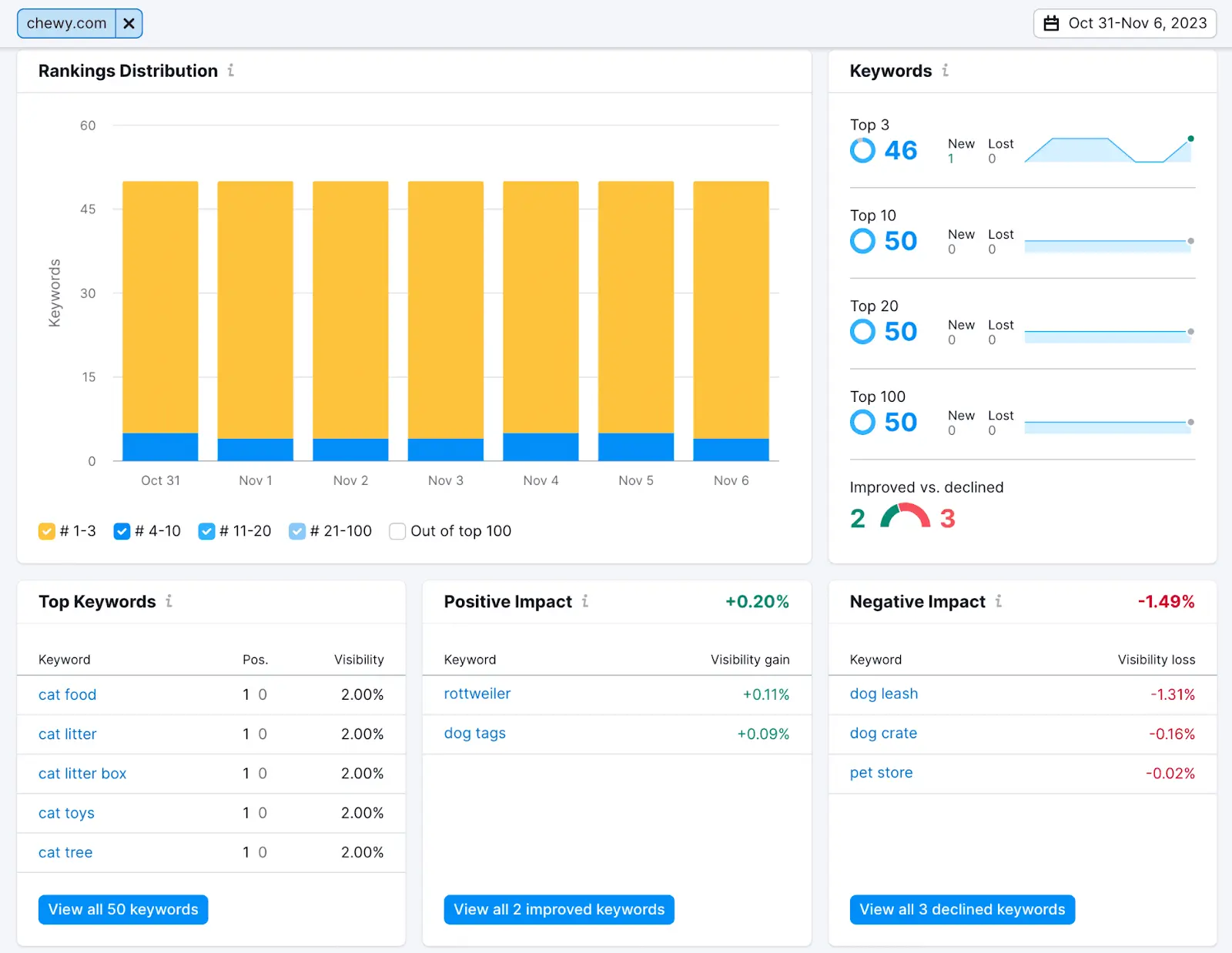
Regular monitoring of your website's rankings for targeted keywords is crucial. This not only helps you understand how well your pages are performing but also identifies opportunities for improvement. Use tools like Google Analytics and Google Search Console to track your rankings, traffic, and other important metrics. Consistent check-ins allow you to react quickly to any changes in your rankings, helping you maintain or improve your position in search results.
Refine Your Keyword List, Analyze Competition Regularly
Your initial keyword research is just the beginning. The digital market and user behaviors are always evolving, necessitating regular updates to your keyword list. Add new, relevant keywords as you discover them and phase out those that no longer serve your goals. Additionally, keep an eye on your competitors' strategies. Regular analysis of their keyword targeting and content approach can reveal new opportunities for your own strategy and help you stay competitive.
Adjust Your Content Strategy Based on Analytics and Feedback
Analytics provide a wealth of information about how users interact with your content. Review your site's analytics regularly to see which pages are performing well and which aren't. Look for patterns in the data that can inform your content strategy, such as particular topics or types of content that resonate with your audience. Also, consider direct feedback from your audience through comments, social media interactions, and customer inquiries. Use this feedback to refine your content, making it more engaging and valuable to your audience.
Keep Learning and Evolving Your SEO Tactics
SEO is a field that requires continuous learning. Search engines frequently update their algorithms, and new trends in content consumption emerge regularly. Stay informed about the latest SEO news and trends by following industry blogs, attending webinars, and participating in online forums. Experiment with new tactics and technologies to see what works best for your website and audience. The willingness to learn and adapt is what separates the most successful SEO strategies from the rest.
Key Steps for Effective SEO Keyword Research
Effective SEO keyword research is a multifaceted process that involves understanding your audience, analyzing search intent, and strategically selecting keywords. By following these key steps, you can create a robust keyword research checklist that will guide your content strategy and improve your website's search engine rankings.
Know Your Audience and Choose Your Main Topic and Location
Know Your Audience: The first step in effective keyword research is to understand who your audience is. This involves identifying their needs, preferences, and the type of content they are searching for. Knowing your audience helps you tailor your content to meet their expectations and solve their problems.
Choose Your Main Topic and Location: Once you understand your audience, select a main topic that aligns with their interests and your business goals. If your business serves a specific geographical area, consider location-based keywords. This approach helps attract a targeted audience and increases the relevance of your content.
Understand and Analyze Search Intent
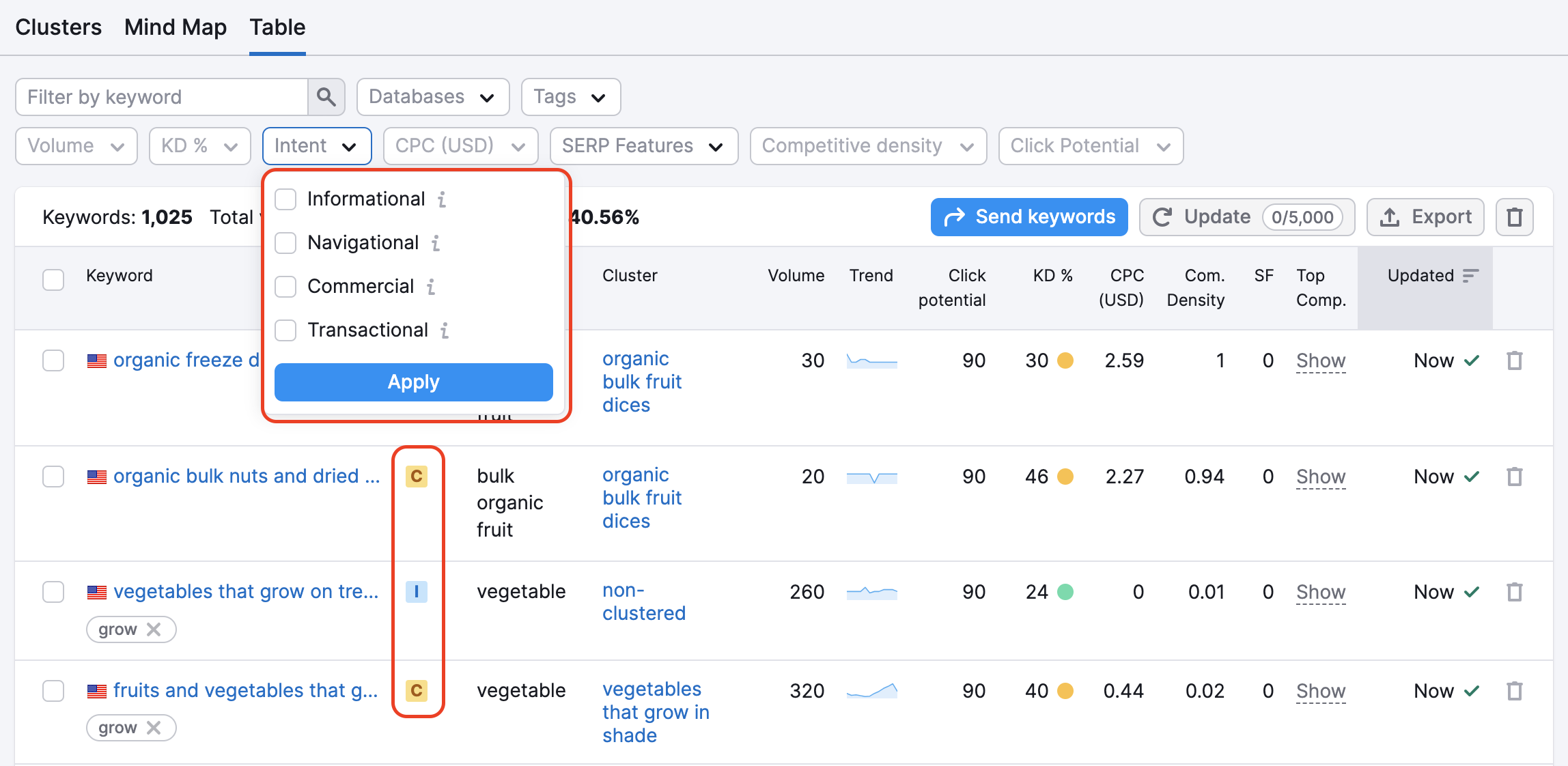
Understand Search Intent: Every search query has an intent behind it. Understanding this intent is crucial for selecting keywords that match what users are looking for. Search intent can be informational, navigational, transactional, or commercial investigation.
Analyze Search Intent: Analyze the top-ranking pages for your target keywords to understand the type of content that satisfies user intent. This analysis helps you create content that is more likely to rank well and meet the needs of your audience.
Keyword Mapping, Filtering by Volume and Difficulty
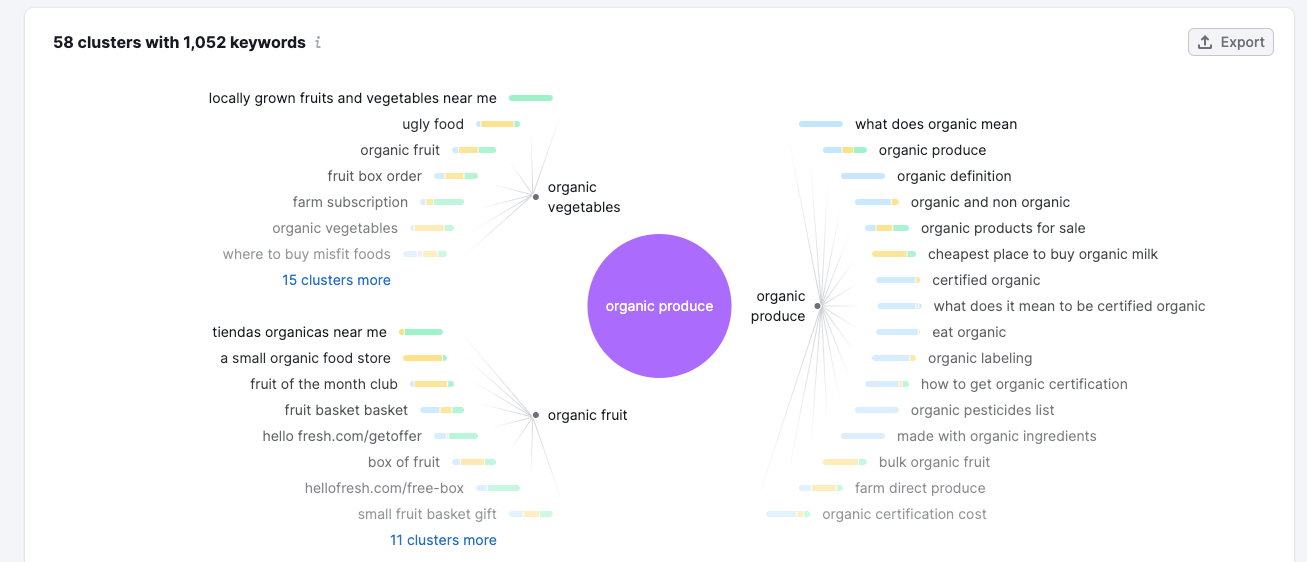
Keyword Mapping: After identifying your keywords, map them to specific pages on your website. This process, known as keyword mapping, helps ensure that each page targets a unique set of keywords, avoiding internal competition and improving your site's SEO structure.
Filtering by Volume and Difficulty: Use keyword research tools to filter keywords by search volume and difficulty. Prioritize keywords with a high search volume and low to medium difficulty, as these are more likely to drive traffic to your site without being overly competitive.
Review the SERP and Research Related Keywords
Review the SERP: Search Engine Results Pages (SERP) analysis gives you insights into the content format and features (like snippets, images, or videos) that are currently ranking for your target keywords. This information can guide your content creation and optimization strategies.
Research Related Keywords: Expand your keyword list by researching related keywords and LSI keywords. These are conceptually related terms that help search engines understand the context of your content. Including these in your content can improve its relevance and visibility in search results.
Optimization and Implementation
Optimizing and implementing your keyword strategy is a critical phase in the SEO process. It involves fine-tuning your content with targeted keywords, assessing keyword metrics, and analyzing competitors' strategies to identify opportunities. By following these steps, you can ensure that your content not only ranks well but also meets the needs of your audience.
Optimize Your Content with Targeted Keywords
Once you have a solid list of targeted keywords from your keyword research checklist, the next step is to integrate these keywords into your content naturally. This means placing them in your titles, headings, meta descriptions, and throughout the body of your content in a way that feels organic and enhances readability. Remember, the goal is to inform and engage your audience, not just to rank for certain keywords. Use LSI keywords to add depth to your content and help search engines understand the context of your pages better.
Check the Volume and Difficulty of Your Keywords
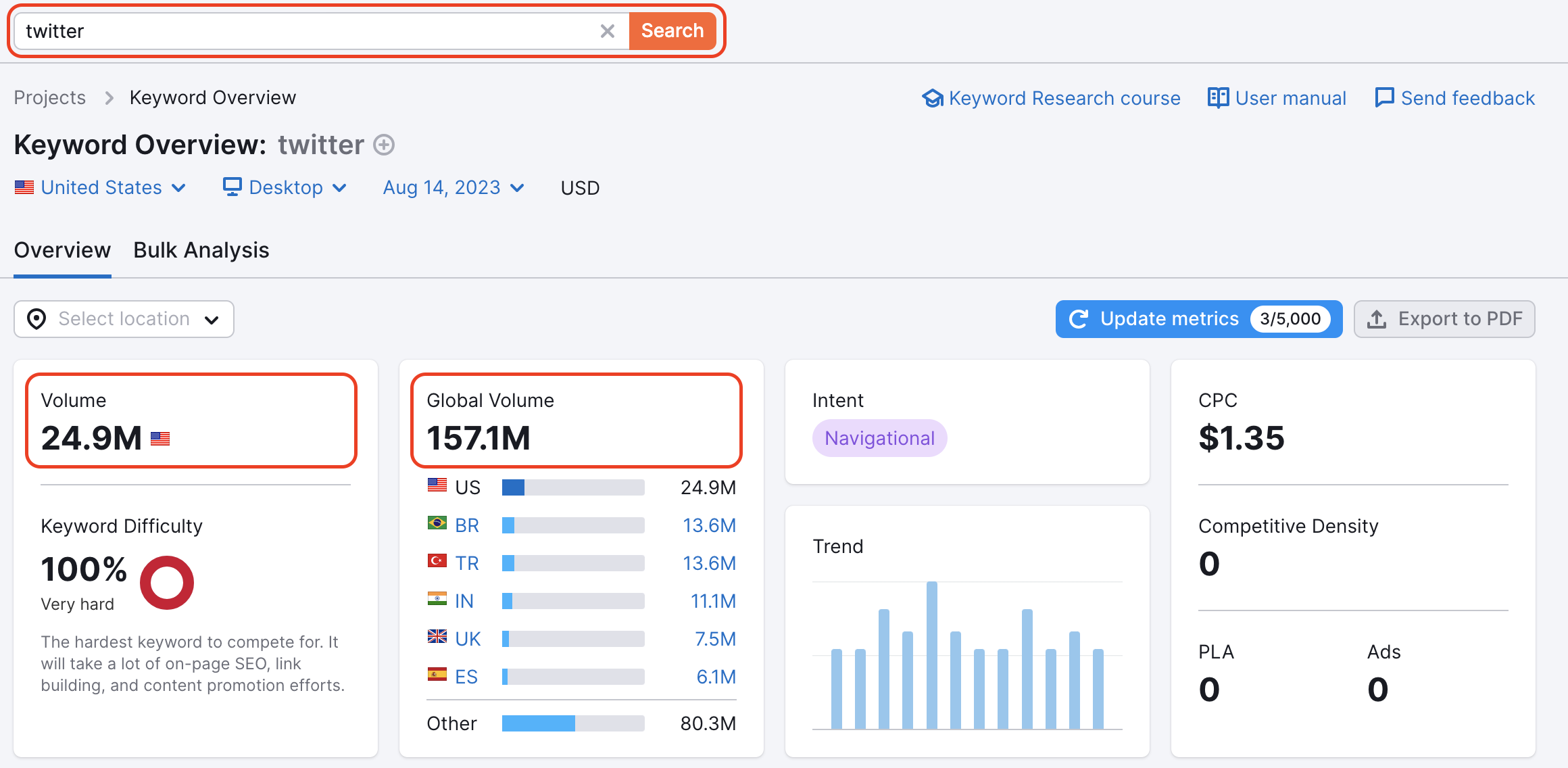
Before finalizing your keywords, check their search volume and difficulty scores using SEO tools. Keywords with high search volumes indicate a high interest from users but may also come with high competition. On the other hand, keywords with lower difficulty scores are easier to rank for but might not bring in as much traffic. Striking the right balance between volume and difficulty is key. Aim for keywords that have a reasonable search volume with a difficulty level that matches your website's current SEO strength.
Analyze Competitors’ Strategies for Insightful Gaps
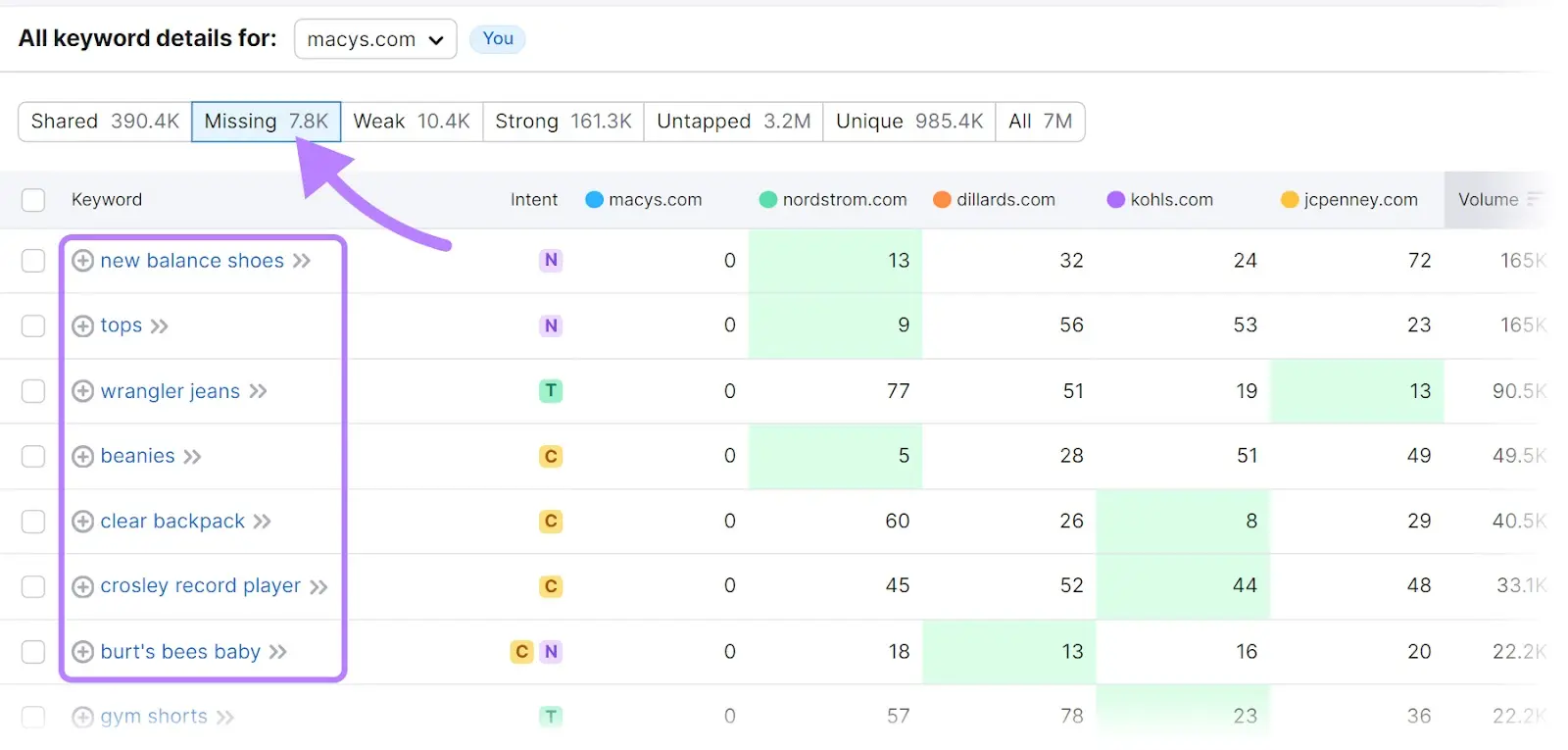
Analyzing your competitors' keyword strategies can reveal gaps in their content that you can exploit. Look at the keywords they rank for, especially those with high volumes but low competition. Also, review their content formats, backlink profiles, and user engagement metrics. This analysis can uncover valuable insights into what works in your industry and where there might be opportunities for your content to stand out. Pay special attention to any high-value keywords your competitors might have overlooked or underutilized.
Conclusion
A comprehensive keyword research checklist is an indispensable tool for any SEO strategy. It guides you through the intricate process of identifying the right keywords that not only align with your content goals but also resonate with your target audience. By understanding your audience, analyzing search intent, leveraging competitive insights, and optimizing your content with targeted keywords, you can significantly improve your website's visibility and engagement.
Remember, keyword research is not a one-time task but an ongoing process. Search trends evolve, and so do the interests and needs of your audience. Regularly updating your keyword research checklist and adapting your content strategy accordingly is crucial for staying ahead in the competitive digital landscape.
Frequently Asked Questions (FAQs)
In this section, we address some common questions and concerns about the keyword research checklist.
How often should I update my keyword research checklist?
Update your keyword research checklist at least every quarter to adapt to changing search trends and audience interests, ensuring your content remains relevant and competitive.
Can I use free tools for keyword research, and are they effective?
Yes, you can use free tools like Google Keyword Planner and Ubersuggest for keyword research. They are effective for getting started and can provide valuable insights into search volumes and trends.
How do I measure the success of my keyword strategy?
Measure the success of your keyword strategy by tracking increases in organic traffic, improvements in search engine rankings for targeted keywords, and higher engagement rates on your content.